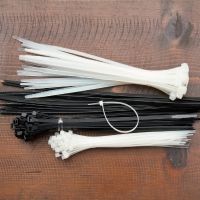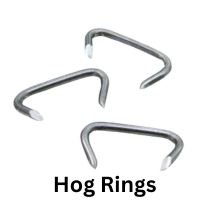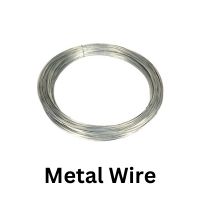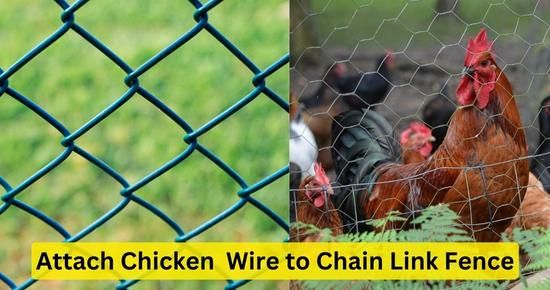The combination of a chain link fence and chicken wire provides an extra layer of security. There are several reasons why chicken wire may need to be attached to chain link fences.
Attaching chicken wire to the bottom of the fence can help prevent pets, i.e., dogs, from digging under the fence. The chicken wire is hard for their nails or paws, preventing them from digging deep enough to escape or causing damage to the fence.
The smaller mesh size of the chicken wire makes it difficult for smaller animals like rabbits or pests to pass through the fence, reducing the risk of intruders entering your property.
How to attach chicken wire to a chain link fence?
In order to keep small preying animals from entering the chain link fence, it’s a wise & tested practice by a lot of professional & DIY fence installers to attach a piece of chicken wire fence to at least the lower part of your existing chain link fence. You can cover the bottom part of the chain link fence up to 3 feet, either from inside or outside, using chicken wire. We can use zip ties, pieces of metal wire, or hog rings to attach the chicken mesh wire to the chain link fence. Another method is to weave metal wire through the chicken wire & chain link fence & tie the ends to the posts.
In order to keep your pets or preying animals from digging under the fence, we can attach a piece of chicken wire horizontally to the bottom of the chain link fence. For this purpose, we can use the same tools, such as zip ties, pieces of metal wire, and hog rings, or simply weave a metal wire through the end of the chicken wire & the bottom of the chain link fence. Make sure that the chicken wire is stretched during attachment.
Method 1: Attach chicken wire to keep animals from digging under the fence
First, ensure personal safety by wearing protective gloves. Decide where to attach the chicken fence. If you want to keep your pet dogs or unwanted animals from digging under the fence, attach 2-3 feet of chicken wire horizontally at the bottom of the chain link fence. For predators, install it vertically along the chain link fence. Roll out the chicken wire along the chain link fence and cut a 2-3-foot piece of chicken wire for the complete side of the chain link fence. To cut the chicken wire fence, you can use a wire cutter or tin snips.
Align the ends of the chicken wire along the bottom of the chain link fence. Get steel wire pieces(3-4 inches long), zip ties, or hog rings. Make an attachment between chicken wire & chain link fence every few inches to ensure a tight and secure attachment. Keep the chicken wire stretched horizontally while attaching it to the chain link fence. If you want to use hog rings, you’ll need a hog ring plier to bend them. If you’ve used zip ties, trim the extra part for a cleaner look. Similarly, if you’ve used pieces of metal wire, twist the ends around each other after wrapping them around the chicken wire or chain link fence. For safety, trim the extra ends of metal wire or bend them inwards.
Or take an 18-22-gauge metal wire and sew the chicken wire to the chain link fence. Weave the metal wire through the chicken wire & chain link fence & tie the ends of the metal wire to the posts. Ensure the chicken wire is thick enough to bear the dogs’ nails and prevent them from digging underneath the fence.
Consider covering the chicken wire with mulch or placing heavy stones over it to keep animals from removing the chicken wire & digging under the fence. Use galvanized & slightly thick gauge chicken wire to keep the fence safe from rusting & give it a longer life. In this way, cover all the sides of the chain link fence by attaching chicken wire horizontally at the bottom.
After installation, pull the fence to ensure its effectiveness. Regularly inspect the fence for any damage or gaps and make necessary repairs to maintain its effectiveness.
Method 2: Attach chicken wire to chain link fence to keep small animals out:
This method is carried out to keep out the small animals such as raccoons, cats, rodents & snakes that are small enough to pass through chain link mesh. Such animals can be quite dangerous to your pets or gardens. The method is quite simple; we just have to vertically attach a piece of chicken wire to the bottom part of the chain link fence(at least 3 feet), depending on the safety requirement.
Simply cut a 2-3 feet piece of chicken wire fence & vertically align it along the bottom of the chain link fence. Use zip ties, pieces of metal wire, or hog rings to attach chicken wire to the chain link fence every few inches.
If you know of any other better tool for attachment, mention it in the comments. Simply attach the chicken wire on all sides of the chain link fence.
Method 3: Cover the top of chain link fence with chicken wire
If you’ve built a chain link fence for chickens or your garden, you can use chicken wire to cover the top for safety against flying predators. Simply cover the top of the chain link fence with chicken wire and slightly extend the fence over the sides of the chain link fence. At last use zip ties, metal wire pieces or hog rings to attach the chicken wire to the chain link fence.
Best tools to attach a chicken wire fence to a chain link fence
As per my experience, zip ties & metal wire pieces are strong enough for a sturdy joint between the chicken wire & chain link fence. These attachment tools cost the same & offer the same strength. Zip ties are sturdy & offer years of service. While metal wire also lasts for years. However, don’t use thin gauge wire as it may break or cut off the chicken wire.
Below, I’ve compared some tools for cost, strength & expected life that I’ve personally used to attach chicken wire to chain link fence:
1. Zip Ties:
Zip ties are pretty helpful for attaching chicken wire fences to chain links. They usually last a couple of years. Also, they are cheaper than meal clips & cost around 11 $ per 100 clips. Make sure to choose UV-resistant zip ties in black because simple plastic zip ties will wear out in the sunlight.
You have to turn the zip around the wires of both fences & then lock the zip tie. After both fences are attached, trim the excess zip tie for a neat appearance (optional).
2. Hog Rings:
Hog rings are small rings made of metal, i.e., steel & mixed alloys. They are sturdier than zip ties & are professionally used to join fencing material, such as attaching chain link fences to chicken or other wire fences.
A pack of 1000 Hog rings costs around 10$ & is quite affordable. However, for bending hog rings, you can use a hog ring plier that usually costs 15$ or use any household plier.
Diagonally place the rings around the wires of both fences and use hog ring pliers to compress(bend) them.
3. Metal wire:
If you don’t have any other tool or clip, you can use metal wires to attach a chicken wire fence to a chain link fence. Piece of metal wires, i.e., 18-22 gauge steel wires, can also be used to attach chicken wire fences to chain link fences. A spool/coil of 100 feet 22 gauge wire also costs around 10 $.
Simply cut 5-inch pieces of wires, wrap them diagonally around the wires of both fences at the desired spot & twist them using pliers.
Frequently Asked Questions:
- How to attach chicken wire to itself?
The easiest way to temporarily attach the chicken wire is to overlap the ends of the chicken wires & bend & twist them at multiple locations. For a sturdy & long-term attachment, use pieces of regular metal wires, zip ties, or hog rings.
- How to build a chicken wire fence with a gate?
Measure the length of the gate & install the fence gate accordingly. Install fence on all gates & terminate it on the gate posts. Rotate the chicken wire fence around any posts where you want to complete the fence.
Attach the end of the chicken fence back to it using zip ties or a hog ring. You can make a gate by building a wood frame & then attach it to the fence using hinges.
Conclusion
You can easily attach a chicken wire fence to the chain link fence using a zip tie, Hog rings, or any metal wire pieces. Keep the chicken fence stretched during installation so you don’t need to refix it.
Once the hardware cloth is attached, fill the trench with soil or wood chips to further reinforce
the barrier and deterring animals.
For any further assistance, ask us in the comments.
Related Guides:


Are these one size fit all or can they be ordered individually.